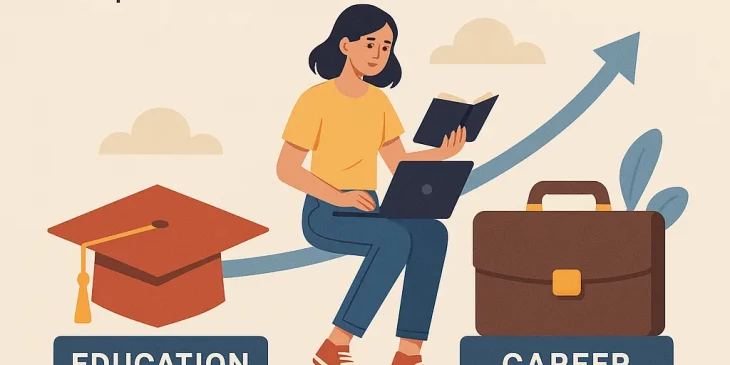Navigating the Balance Between Education and Career: Strategies for Students to Align Academic Pursuits with Professional Aspirations
In today’s fast-paced world, students are often faced with the daunting task of balancing their education with their career aspirations. With the increasing complexities of the job market, it is essential for students to not only excel academically but also to prepare for their future careers. Here are some effective strategies to help students navigate this balance successfully.
1. Set Clear Goals
Establishing clear, achievable goals is the first step in balancing education and career. Students should define what they want to achieve academically and professionally. This might include short-term goals such as maintaining a certain GPA, as well as long-term aspirations like landing a specific job after graduation.
2. Create a Structured Schedule
Time management is crucial. By creating a structured schedule that allocates time for both study and career-related activities, students can ensure they are dedicating enough time to both areas. Utilize planners or digital tools to keep track of deadlines, classes, and job applications.
3. Engage in Extracurricular Activities
Participating in extracurricular activities can provide valuable experience and help build a resume. Students should seek opportunities that align with their career interests, such as joining clubs, volunteering, or engaging in internships. These experiences not only enhance skills but also create networking opportunities.
4. Seek Internship Opportunities
Internships are an excellent way to gain practical experience while still in school. They provide insights into the industry and help students apply their academic knowledge in real-world settings. Many academic programs offer internship placements, which can be an invaluable resource.
5. Foster Relationships with Mentors
Building relationships with mentors in the desired field can provide guidance and insights that are crucial for career development. Professors, industry professionals, or career advisors can offer advice, recommend resources, and help students navigate their career paths.
6. Leverage Academic Resources
Students should take full advantage of the resources available through their educational institutions. This includes career services, counseling, and workshops that focus on resume writing and interview skills. These resources can help bridge the gap between education and career.
7. Stay Informed About Industry Trends
Keeping up-to-date with industry trends is crucial for aligning academic pursuits with professional aspirations. Students should read relevant articles, follow industry leaders on social media, and participate in webinars or conferences to remain aware of the skills and knowledge that are in demand.
8. Reflect and Adjust
Lastly, students should regularly reflect on their goals and progress. It’s important to evaluate what is working and what isn’t, allowing for adjustments to the plan as needed. Flexibility can help students navigate unexpected challenges while still pursuing their aspirations.
Balancing education and career is a challenge that many students face, but with the right strategies in place, it can be achieved. By setting clear goals, managing time effectively, and seeking relevant experiences, students can align their academic pursuits with their professional aspirations, setting the stage for a successful future.



Leave a Comment
To post comment, please